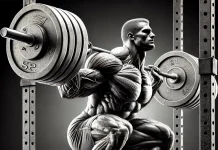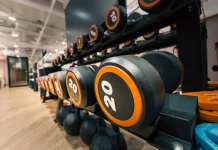Last Updated on February 20, 2024
The science of movement is named kinesiology. It’s the study of physical activity or motion, in other words. It may aid in a variety of non-connected disciplines like sports research, exercise physiology, human anatomy, physiology, physical conditioning, rehabilitation, and other health-related issues in addition to helping those who want to maintain their health or get in shape.
Basic knowledge of kinesiology can be utilized to diagnose a range of common health problems including excessive sweating, difficulty urinating, and difficulty breathing. A raised pulse rate, dizziness, nausea, or an accumulation of these symptoms are the most frequent indicators. Imbalances in the muscles and tissues surrounding the heart, lungs, and stomach cause these symptoms. After patients have undergone treatment for one of these issues, it’s simpler to ascertain the cause and find a remedy. It is common for patients to undergo a lot of medical testing prior to being prescribed a treatment plan, which is why an awareness of kinesiology will be valuable. The variety of available treatment options and the reality that not all of them are appropriate for everyone makes it important to be an expert in this field.
The American Kinesiology Association is a non-profit organization dedicated to developing and promoting kinesiology as a science and profession.
Most kinesiology students choose to concentrate on autonomic nervous system disorders and illnesses because kinesiologists are trained to diagnose and treat them. Kinesiology can be performed in several ways, but the most typical are electric-shock therapy, electrotherapy, and massage treatments. Every treatment has pros and cons. Electric shocks have been utilized to treat patients since the 1950s, although they are not the best approach. Electrotherapy and massage therapy are also used, although they are not as prominent. While large numbers of people use this approach, it’s not perfect because there’s no control over the strength of the electric current, which can cause permanent damage to the area it’s targeting.
The purpose of electrotherapy and massage is to induce the contraction of muscles through electric current. While electrotherapy focuses on specific muscles and regulates electric charge, massage therapists loosen tight muscles and boost blood flow throughout the body. Both tactics are used to boost and enhance the health, strength, and condition of muscles, tendons, and ligaments. Kinesiology, on the other hand, works with muscles, not particular areas. As a result, the practitioner can identify where problems are and act collaboratively with the patient to achieve the optimal result.
Kinesiology includes muscle balance, kinesiology motor skills, and stress management, among other things. Muscle balance refers to the coordination and maintenance of the proper functioning of all muscles and joints. It also refers to optimal performance and health. An example of this is a muscle that is inhibited because of its lack of coordination or balance. Kinesiology may be used to help restore proper muscle balance.
The medical professional monitors the activity of a specific muscle as it is being contracted using kinesiology muscle monitoring. The purpose of this procedure is to determine whether a muscle is functioning properly by measuring its activity, force, and range of motion. The patient is then evaluated for stress-related disorders if these changes are observed. When the muscles are monitored, the practitioner can identify the areas of concern and develop a treatment plan to address them. Tension in the back, neck and other muscles may be caused by stress, which can severely impact health.
Many individuals don’t realize that kinesiology plays a key role in physical fitness. Although it is not an exercise science in its purest sense, it can provide significant health benefits through enhanced body mechanics and conditioning. Personal trainers and athletes who utilize kinesiology methods and philosophies are often among the most successful. World-record-breaking track and field athletes utilize kinesiology. For instance, kinesiology is often used in track and field events. Because of the excessive amount of time that athletes spent running back and forth in the field, track and field events were once considered an unfit activity.
Kinesiology has become a vital component of improving athletic performance for both amateur and professional athletes over the past few years. It has also become a critical component of improving human health and conditioning in general. Although it has been around for a long time, only a few instructors teach the fundamentals and techniques of kinesiology. Many people do not know how to apply the skills of kinesiology to improve their athletic performance and health as a result.







